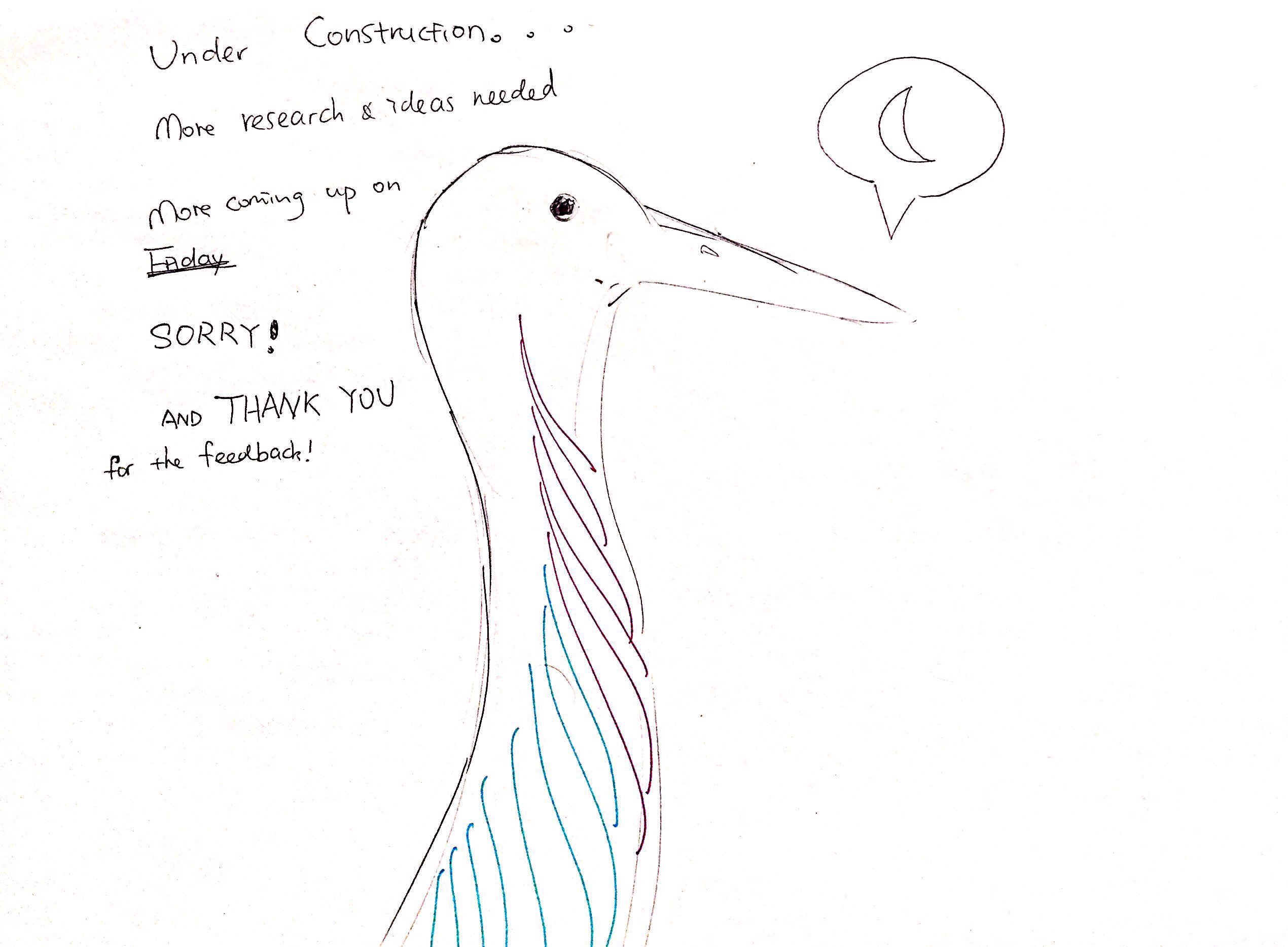Interaction Design in the Wild - Sonia Zhang's Portfolio
I am an anthropology student trying to make sense of interaction design for animals.
Week 5 - Enrichment I
by Sonia
Feb 21, Thur

Assignment proposal for Feb 19, Tue
What does animal enrichment mean when it is not limited to individuals in captivity? How to engage with animals in their natural habitats, influenced but not completely controlled by humans?
In this process, how to remain reflexive of our anthropocentric consequences of our interventions?
Keeping these questions in mind, I offer a brief sketch of two animal enrichment proposals, both for cranes, whom I also had my first ethogram experience with.
1. Expanding behavioural niche
While cranes consume a wide range of food, when they co-reside with other species they tend to occupy a specific niche to minimise competition. Human modification of landscape has undoubtedly influenced the environmental affordance in which cranes can live with, and thereby limits their niche and increases the likelihood for niche overlap. Following this line, it could be said that creating a new niche is a moral responsibility to account for human-induced vulnerability on this species.
The goal of “niche design” is not to produce an artefact but to provide the species with a living environment constituent of their ecosystem. Introducing a new source of foodstuff is not sustainable, but it might be possible to introduce a physical structure that a crane might be willing to dwell. This living structure should provide the functions of a shelter, camouflage and even mating/child-bearing place. It should be made of bio-degradable materials with visual effects, textures and smells that are familiar to cranes’ sensory apparatus. It could also act as a foraging site if the product is developed to attract certain kinds of food source, let it be animal preys or plant-based entities. However, it is important to be cautious of the ethical consequences of prey provision as Newberry (1995: 239) points out.
Animal expert (on cranes): George Archibald
.
2. Introducing artefacts for play
Acts of animal enrichment without functional relevance (i.e. causes improvement in survival, health indicators, social indicators, etc.) seem hard to justify, however, evidence suggests that behaviours that seem functionless can provide functional benefits to the performer (Newberry 1995: 233). I also argue that the introduction a new functional behaviour into wilderness can bear serious consequences on the evolutionary dynamics of not only the target animal species, but also those within the entire ecosystem, which could quickly get out of control from human interveners.
I argue that introducing playful elements into the environment acts as a compromise to the potentially more effective i.e. functional forms of animal enrichment. Although animal play remains an under-explored area, let alone crane-specific studies, I propose to design an object that interacts with the crane’s pecking behaviours in terms of visual effects. For example, a block that changes colour every time it is being pecked. This comes from the observation of cranes constantly pecking around their habitats in my ethogram observation, as well as the fact that cranes visually display themselves over breeding season. While the first one helps me infer that pecking is not only functional but also an exploratory behaviour, the later proves that visual cues do serve an important function for crane’s livelihood. I am aware that this proposal is prone to anthropomorphic assumptions about their behavioural repertoire.